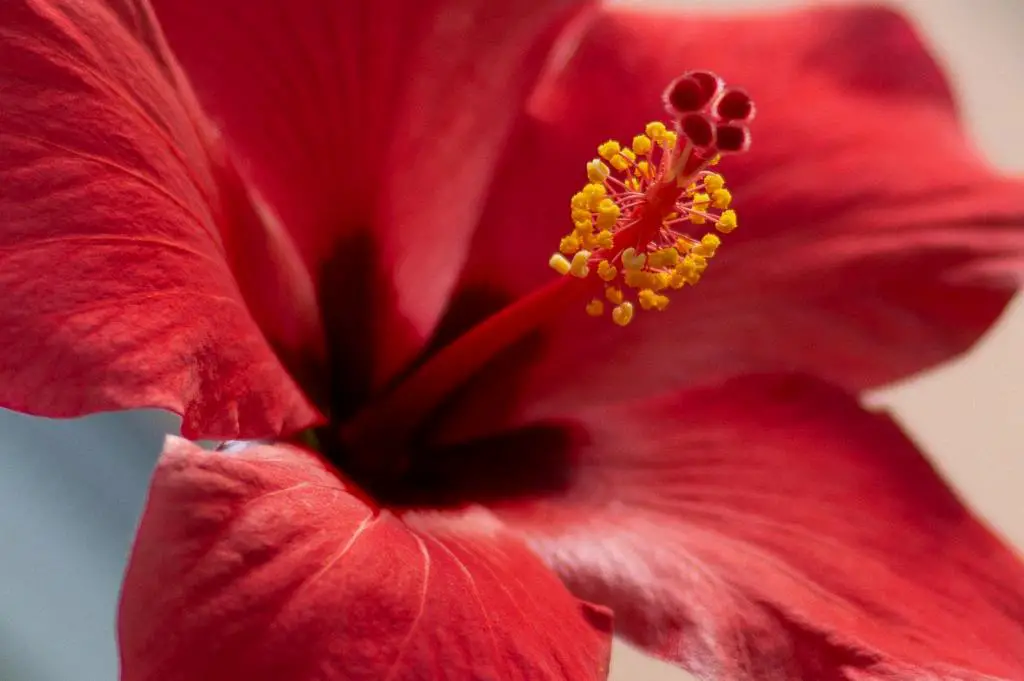When it comes to the size of hibiscus plants, it is essential to consider various factors that contribute to their growth and development. Hibiscus plants belong to the Hibiscus genus and are categorized as perennials, which means that they have the potential to thrive and bloom year after year. One of the key aspects to understand about the size of hibiscus plants is their height range, which typically varies between 3 to 7 feet. This variability in height allows for different varieties of hibiscus plants to be cultivated in diverse environments.
Understanding the Unique Characteristics of Hardy Hibiscus Plants
Hardy hibiscus plants, also known as Hibiscus moscheutos, are a specific type of hibiscus that is known for its robust growth and resilience. These perennial plants exhibit a generous spread, with widths ranging between 2 to 5 feet. The combination of their height and width dimensions results in a visually striking appearance that can enhance the aesthetic appeal of any garden or landscape.
Factors Influencing the Growth of Hibiscus Plants
Several factors can influence the growth of hibiscus plants and play a significant role in determining how big they ultimately get. One crucial factor is the amount of sunlight the plants receive. Hibiscus plants thrive in sunny locations, as adequate sunlight contributes to their overall health and growth potential. Additionally, the availability of nutrients in the soil, proper watering practices, and suitable climate conditions also impact the size and vigor of hibiscus plants.
Cultivating Hibiscus Plants for Optimal Growth
For individuals looking to cultivate hibiscus plants and ensure optimal growth, it is essential to provide them with the proper care and maintenance. Planting hibiscus in well-draining soil enriched with nutrients can promote healthy root development and robust growth. Adequate watering practices, such as ensuring consistent moisture levels without overwatering, can support the plants’ growth and flowering capabilities.
Pruning and Shaping Hibiscus Plants
Pruning is a vital aspect of hibiscus plant care that can help control their size and shape. Regular pruning not only keeps the plants tidy and aesthetically pleasing but also encourages new growth and flowering. By selectively trimming branches and stems, gardeners can shape hibiscus plants to their desired size and form, promoting overall plant health and vitality.
Enhancing the Size and Blooming Potential of Hibiscus Plants
To enhance the size and blooming potential of hibiscus plants, gardeners can consider applying fertilizers specifically formulated for flowering plants. These fertilizers provide essential nutrients that promote vigorous growth and abundant blooming. Additionally, deadheading spent blooms and removing faded flowers can redirect the plant’s energy towards new growth, resulting in a more prolific blooming season.
Creating an Ideal Environment for Hibiscus Growth
Creating an ideal environment for hibiscus growth involves understanding the specific requirements of these plants and ensuring that they are met. Providing hibiscus plants with ample sunlight, well-draining soil, and proper irrigation are crucial elements for fostering their growth and maximizing their size potential. By creating a nurturing environment tailored to the needs of hibiscus plants, gardeners can experience the beauty and vibrancy of these stunning flowering specimens.
Exploring Different Varieties of Hibiscus Plants
There is a wide variety of hibiscus plants available, each with its unique characteristics and growth habits. From hardy hibiscus to tropical hibiscus varieties, each type offers distinctive features that cater to different preferences and climates. Gardeners can explore the diverse range of hibiscus plants to discover the ideal species that aligns with their gardening goals and desired size specifications.
Adapting Cultivation Practices for Hibiscus Growth
Adapting cultivation practices based on the specific requirements of hibiscus plants is essential for ensuring their optimal growth and size development. Tailoring watering schedules, fertilizer applications, and pruning techniques to meet the individual needs of hibiscus plants can result in healthier, larger specimens that flourish and bloom abundantly. By staying attuned to the plants’ growth patterns and adjusting care practices accordingly, gardeners can support the ongoing growth and vitality of their hibiscus plants.
Maximizing the Beauty of Hibiscus Plants in the Landscape
Maximizing the beauty of hibiscus plants in the landscape involves strategic planning and thoughtful placement within garden settings. By selecting suitable locations that offer sufficient sunlight and well-draining soil, gardeners can create an ideal environment for hibiscus growth and showcase the plants’ size and blooming potential. Incorporating hibiscus plants into garden designs can add a vibrant burst of color and texture, enhancing the overall aesthetic appeal of outdoor spaces.

Appreciating the Versatility and Resilience of Hibiscus Plants
Hibiscus plants stand out not only for their striking appearance and vibrant blooms but also for their versatility and resilience in various growing conditions. Whether grown as standalone specimens, used in mixed borders, or cultivated in containers, hibiscus plants showcase their adaptability and beauty. By appreciating the unique qualities of hibiscus plants and nurturing them with care, gardeners can experience the joy of witnessing these charming flowering plants thrive and flourish in their garden landscapes.
